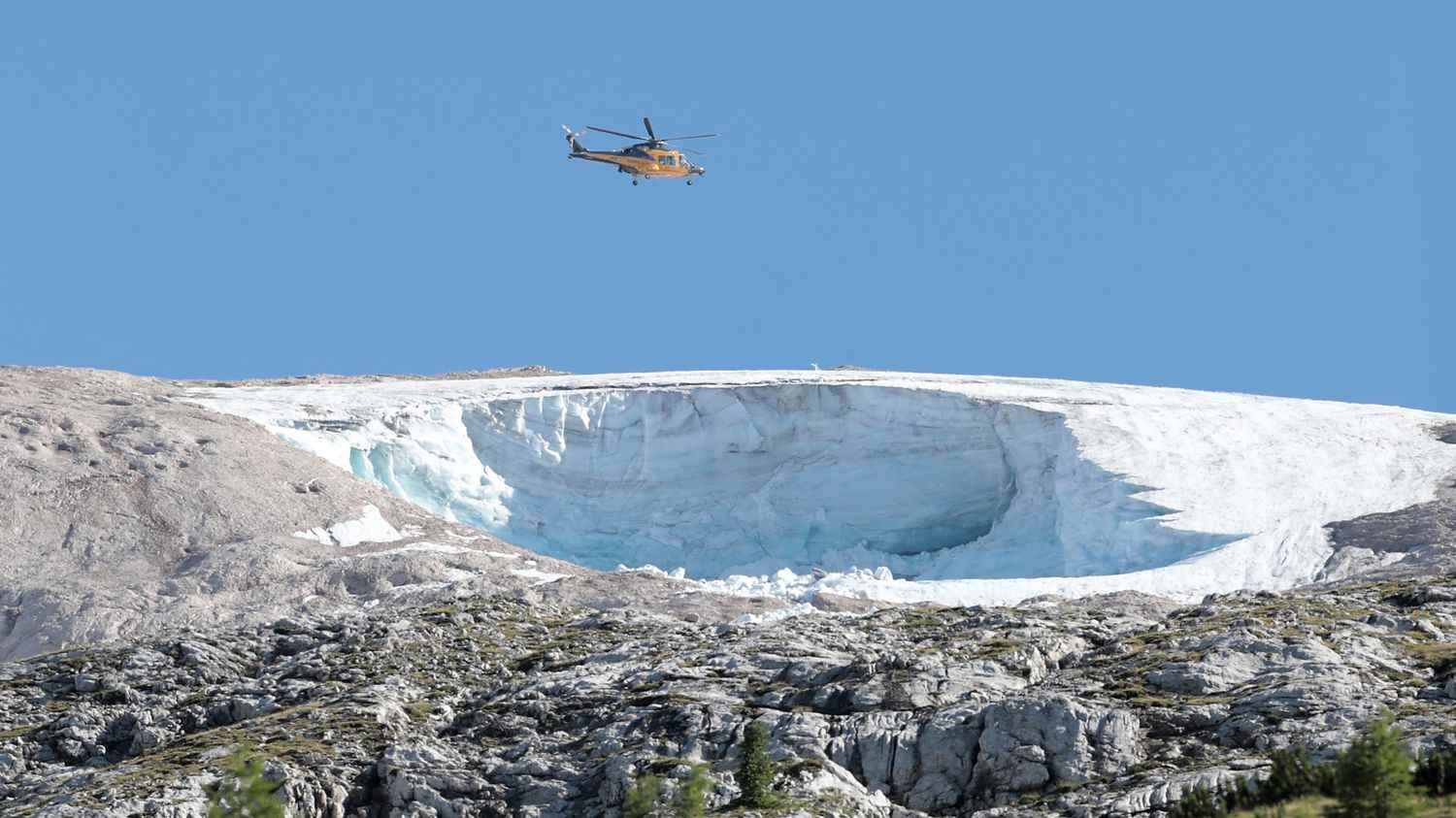“We see our playing field changing almost day by day”, lamented Monday July 4 on franceinfo François Damilano, high mountain guide based in Chamonix and mountaineer. A development he calls “dramatic” and of “spectacular”, while the collapse of the Marmolada glacier in the Italian Alps, on Sunday July 3 left at least seven dead and eight injured. A disaster linked to global warming, Italian Prime Minister Mario Draghi said on Monday. The collapse occurred the day after a record temperature of 10°C at the top of the glacier.
franceinfo: Will it be more and more difficult to climb high mountains?
Francois Damilano: Clearly the golden age of glacier mountaineering is behind us. We have known for several years now that global warming has consequences for high mountain areas. We have to remember what the scientists tell us. In the Alps, the rise in temperature is twice as fast as the global average. So we mountain guides, we mountaineers, see our playground changing almost day by day.
How does this translate in practice? What do you notice daily?
Several signs point to this dramatic and spectacular development. The mass of the glaciers decreases and the mass of glaciers decreases, the morphology of certain glaciers changes radically. For example that of the Marmolada finally finds its front on a much steeper slope than a few years ago. And this is what obviously caused its rupture since it is not a question of a natural fall of seracs due to the advance of the glacier, but a rupture of the front of the glacier. A rupture probably due to a conjunction of two phenomena: both global warming, but also due to a season which is particularly early this year. Indeed, we have already experienced a heat wave in May. Right now in Chamonix, looking at the mountains just above the town, it’s more like conditions usually found in August.
Will this situation force you to modify the practices, the approaches of the expeditions? We obviously think of the very large influx in France on glaciers like that of Mont-Blanc.
The gaze of mountaineers and the gaze of mountain guides are constantly adapting. Our experience and know-how require us to adapt to the evolution of the mountain. This is the very basis of mountaineering. Now, this change in the glacial terrain forces us to several things. First, there is a change in seasonality. We tend to do some routes earlier in the season rather than in the middle of summer as we did before. And then, of course, we must beware of new instabilities, moraines that appear with glacial retreat, certain collapses of walls due to the rise in the permafrost limit. This ground which is permanently frozen rises because of global warming in the mountains. And for several years, we have observed collapses that are quite spectacular. But once again, the job of a guide and the know-how of the mountaineer is to adapt to his terrain and know how to avoid certain areas that have become more fragile.
Should visits to the high mountains be limited in the future?
Don’t get the problem wrong. The solution is not to limit access to the mountain, but to limit global warming. What happened at the Marmolada is a dramatic sign, but it is only a sign of a problem that is much more global.
